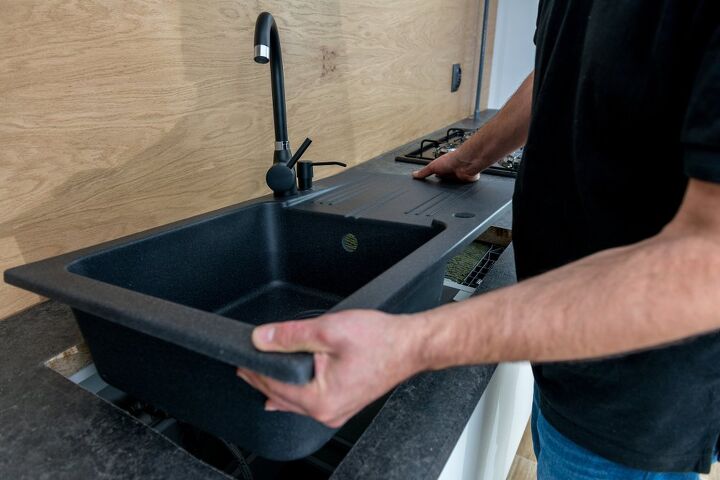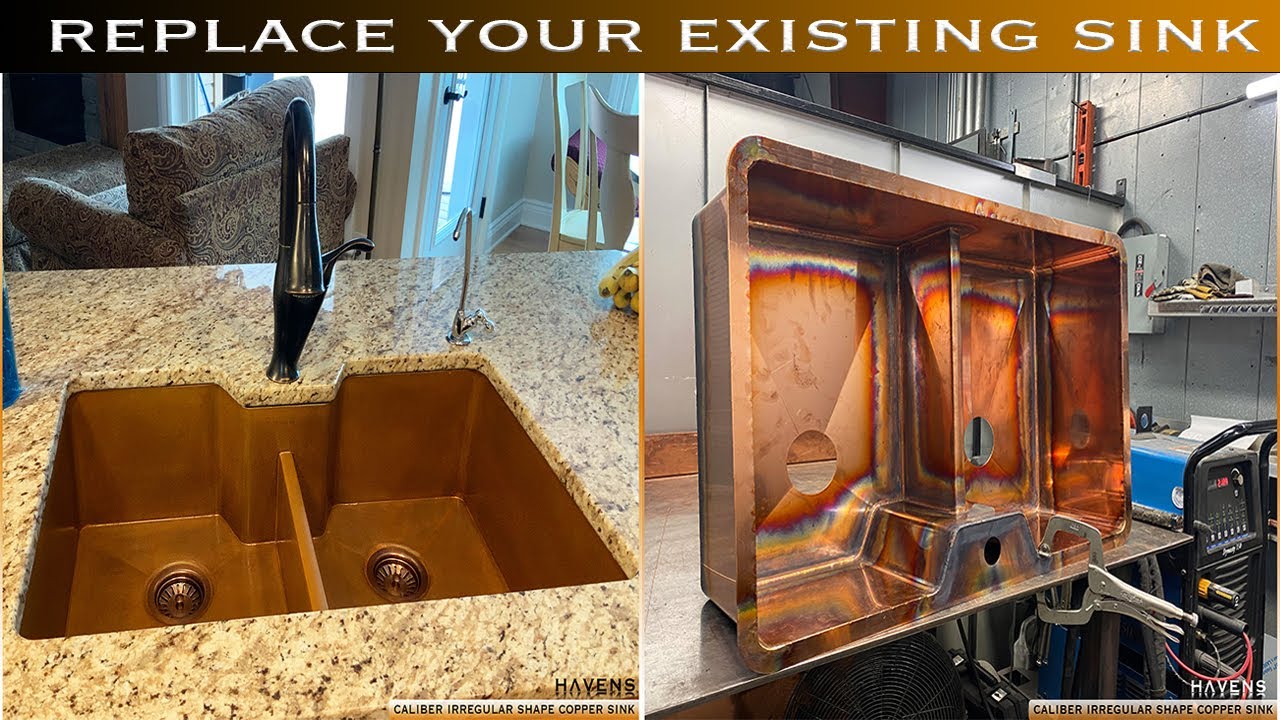Can You Replace a Kitchen Sink Without Replacing Countertops?
Upgrading your kitchen sink can drastically enhance your kitchen’s aesthetics and functionality without the need for a complete countertop overhaul. Many homeowners find themselves asking if they can replace their kitchen sink without incurring the significant costs and effort associated with replacing the entire countertop.
The good news is that it’s not only possible, but it can also be a cost-effective solution.
A well-chosen replacement sink can bring new life to an old kitchen, and with the right considerations and techniques, you can avoid damaging the countertop in the process. This article will explore the feasibility of replacing a kitchen sink independently, detailing the considerations involved, including evaluating your existing sink and countertop, choosing the right replacement sink, and executing a successful installation.
We will also look at potential challenges and costs you might encounter during the process, giving you the tools and confidence needed to make informed decisions for your home.
Table of Contents
- Assessing Your Current Sink and Countertop
- Choosing the Right Replacement Sink
- Installation Process for a New Sink
- Common Problems When Replacing Sinks
- Cost Implications of Replacing the Sink
Assessing Your Current Sink and Countertop
Before starting the replacement process, it’s crucial to evaluate both your sink and countertop. This initial assessment can save you significant headaches and costs.
Begin by checking for signs of damage or wear.
This includes looking for cracks, stains, or water damage around the sink area. If your existing countertop is made from durable materials like granite or quartz and is in good condition, it may be wise to proceed with just a sink replacement.
Undermount vs. Drop-in Sinks: Determine whether your current sink is an undermount or drop-in model.
Undermount sinks attach beneath the countertop and can be more difficult to remove without causing damage.
Drop-in sinks, however, rest on top of the countertop, making them generally easier to replace.
Evaluating Countertop Condition: If your countertop reveals significant damage like extensive chips or is made from laminate that has yellowed over time, it may be more prudent to replace both the sink and the countertop. A damaged countertop not only looks unappealing but also can compromise the structural integrity needed to support a new sink installation.
Pros and Cons of Replacing Just the Sink:
- Pros: Lower cost, reduced labor, quick project timeline.
- Cons: New sink might not match countertop if it has aged or if significant damage exists.
| Condition | Recommended Action |
|---|---|
| Countertop in Good Condition | Replace only the sink |
| Countertop shows minor wear | Replace the sink and assess countertop damage |
| Significant damage present | Consider full countertop replacement |
The table above provides a clear guideline on what actions to take based on the condition of your countertop and sink. Homeowners must evaluate their unique situations to decide whether to go forward with just a sink replacement or consider a full remodel.
As indicated, if the existing countertop is slightly worn yet functional, opting for only the sink can save costs while still refreshing the kitchen’s appearance.
However, any signs of serious damage, particularly with laminate or weakening materials, typically signal deeper issues that may ultimately require a comprehensive countertop investment.
- Evaluate the condition of both the sink and countertop before replacing.
- Undermount sinks are typically more delicate to remove than drop-in models.
- Serious countertop damage may necessitate a full replacement, negating the benefits of a simple sink swap.
Choosing the Right Replacement Sink
Selecting the right sink is paramount when attempting to replace it without changing the countertop. Consider the size, style, and material of the sink while ensuring it fits perfectly within the current countertop’s cutout.
By focusing on these attributes, you can seamlessly enhance your kitchen without the risk of damaging your existing countertop.
Materials: Popular sink materials include stainless steel, porcelain, and composite materials. Stainless steel remains a top choice due to its durability and cost-effectiveness.
Porcelain sinks offer a classic look but can chip, while composite materials provide both robustness and aesthetic appeal.
Sizing: Ensure that your new sink fits accurately in the existing cutout. The general rule of thumb is to measure the height, width, and depth of your current sink.
This will minimize problems during installation.
A mismatch can result in costly countertop modifications.
Design Choices: Depending on your aesthetic preference, you may prefer a traditional style or a more modern look. Consider how the new sink will integrate with existing fixtures and the overall kitchen design.
For example, if your kitchen leans towards a minimalist aesthetic, a sleek stainless steel sink may be ideal, while a farmhouse-style sink could cater more to a rustic kitchen design.
| Material | Pros | Cons | Cost Range |
|---|---|---|---|
| Stainless Steel | Durable, easy to clean, affordable | Can scratch and dent, shows spots | $100-$500 |
| Porcelain | Classic aesthetic, easy to match | Can chip or crack | $250-$700 |
| Composite | Durable, various styles | Can be more expensive | $200-$1,000 |
The table compares various sink materials, highlighting their pros and cons alongside estimated cost ranges. As shown, stainless steel is economical at the lower cost range, making it appealing to budget-conscious homeowners.
Nevertheless, porcelain and composite materials offer unique advantages, such as aesthetic value and durability.
Understanding these materials helps homeowners select a sink that is both functional and complements their existing kitchen style.
- Choose a sink that fits your existing countertop cutout accurately.
- Evaluate material durability vs. aesthetic appeal to match kitchen design.
- Consider the cost and maintenance requirements of different sink materials.
Installation Process for a New Sink
Successfully replacing your kitchen sink involves a careful installation process to avoid damaging the existing countertop. Here’s a detailed step-by-step guide to navigate this project confidently.
Tools Needed for Installation
To install your new sink, ensure you have the following tools handy:
- Utility knife
- Silicone caulk
- Caulk gun
- Screwdrivers
- Adjustable wrench
- Multitool with various blades
Step-by-Step Guide to Removing the Old Sink
1. Disconnect the Plumbing: Before removing your sink, shut off the water supply and disconnect pipes and fittings.
This includes any garbage disposals.
2. Cut Caulk: Using a utility knife, carefully cut the caulking around the sink’s rim.
This step is crucial for preventing damage during removal.
3. Use a Wedge: Insert plastic wedges at the corners of the sink to help break the seal gently.
Avoid using excessive force that might damage the countertop.
4. Remove Sink Clips: If your sink is a drop-in type, locate and remove the clips securing the sink in place.
5. Lift Out the Sink: Once loose, carefully lift the old sink from its position.
Properly Installing the New Sink
1. Apply Caulk: Apply a bead of silicone caulk around the cutout in your countertop where the sink will sit.
2. Position the New Sink: Carefully place the new sink into its designated area and ensure it sits snugly without gaps.
3. Secure with Clips: For drop-in sinks, use mounting clips to hold it securely in place; for undermount, use brackets as required.
4. Reconnect the Plumbing: Once the sink is set, reconnect all plumbing, ensuring that there are no leaks at joints.
5. Test for Leaks: After re-connecting the plumbing, turn on the water supply and check for any leaks, ensuring functionality.
| Step | Action Required | Estimated Time to Completion |
|---|---|---|
| Disconnect Plumbing | Shut off water and disconnect sink fittings | 30 minutes |
| Cut Caulk | Remove caulking from existing sink | 15 minutes |
| Remove Old Sink | Lift and detach the old sink carefully | 20 minutes |
| Install New Sink | Secure the new sink and reconnect plumbing | 1 hour |
The table outlines the estimated time for each step involved in the sink replacement process. Homeowners can use this timeframe to plan their project accordingly.
Note that removing old sinks often requires the most time due to the potential for stuck caulking and existing plumbing complications.
Installing the new sink can go quickly once the old one is out, indicative of a rewarding project that significantly enhances your kitchen. Planning for each stage ensures a structured approach and preparedness for the project ahead.
- Gather all necessary tools and materials before starting.
- Carefully follow each removal and installation step to prevent damage.
- Testing for leaks is critical for ensuring functionality after installation.
Common Problems When Replacing Sinks
During a sink replacement, homeowners may encounter several issues. Foresight regarding these challenges can significantly ease the process.
Here are common problems and how to address them:
Addressing Leaks and Misalignment
One frequent issue after installing a new sink is water leaks, particularly from exposed plumbing connections. Ensure all pipes are tightly secured and re-sealed with plumber’s tape if needed.
Misalignment of the sink within the cutout can also lead to gaps where water can escape and damage the countertop.
Always check the levelness and position of the sink before applying caulking.
When to Call a Professional
If you encounter issues such as significant damage to your countertop, problematic plumbing disconnections, or uncertainties regarding sink removal, it’s best to consult with a trusted contractor. Calling a professional can ensure that work is performed to code and can save homeowners from costly mistakes.
Repairing Damaged Countertops
If minor damage occurs during the removal or installation process, take steps to repair it as soon as possible. For scratches on granite or quartz, there are polishing kits available that can restore the shine.
In more severe cases, professional refinishing might be necessary to preserve the surface’s integrity and appearance.
- Leaks and misalignment are common issues; ensure plumbing is secure.
- Consulting a professional can prevent costly mistakes.
- Minor damage can often be repaired with the right products.
Cost Implications of Replacing the Sink
Understanding the financial aspect of replacing your sink is essential. Costs can vary significantly based on the type of sink, the material, and labor if professional help is utilized.
Here’s a guide to what you might expect.
Budgeting for the Sink Replacement
A straightforward sink replacement typically ranges from $216 to $642, depending largely on the sink materials chosen. It’s advisable to factor in additional costs for plumbing repairs or modifications if they arise.
Comparison of DIY vs. Professional Costs
While homeowners can save on labors costs by opting for a DIY approach, complications often arise that may warrant professional involvement. Below is a budgeting comparison:
| Method | Estimated Cost | Pros | Cons |
|---|---|---|---|
| DIY | $216-$500 | Lower cost, hands-on | Time-consuming, risk of errors |
| Professional | $600-$1,200 | Quick, expert installation | More expensive, less involvement |
The comparison highlights the variances in potential costs between DIY efforts and hiring professionals. While DIY can keep costs low, the potential for mistakes underscores the value of experienced assistance.
Ultimately, the right choice depends on the homeowner’s comfort with plumbing and installation tasks.
Potential Hidden Costs
Don’t overlook hidden costs that may arise, such as replacing additional plumbing, modifying the countertop, or even upgrading fixtures like faucets or garbage disposals that might not seamlessly integrate with your new sink installation. These factors can significantly increase your budget, so proper planning is crucial.
- Budgeting for a sink replacement should include expected costs and potential hidden expenses.
- While DIY can be cheaper, it is not without risks; hiring an experienced plumber can save time and avoid complications.
- Assess ongoing maintenance costs when choosing sink materials to ensure your investment pays off over time.
FAQs
Can an undermount sink be replaced without damaging the countertop?
Yes, an undermount sink can be replaced without damaging the countertop by disconnecting the plumbing, removing the clips, and breaking the silicone adhesive bond. Ensuring care throughout the removal process is essential.
Can you just replace a kitchen sink?
Yes, you can replace a kitchen sink, although it is a straightforward yet time-consuming task and may involve negotiating with various shapes, sizes, and materials. Proper measurements are crucial for a successful installation.
Can you install a new sink in existing granite countertop?
Yes, you can install a new sink in an existing granite countertop by carefully cutting into the granite with appropriate tools and following similar processes to other countertop materials while ensuring to disconnect water lines beforehand.
Is it possible to change a drop-in sink without altering the countertop?
Yes, it is possible to change a drop-in sink without altering the countertop if the new sink has the same dimensions and configuration as the old one.
What are the best methods for removing a kitchen sink without affecting the countertop’s integrity?
The best methods include disconnecting the plumbing, removing sink clips, and carefully lifting and removing the sink while applying minimal pressure to avoid damaging the countertop.
Conclusion
In conclusion, replacing a kitchen sink without replacing your countertop is a feasible project that can breathe new life into your kitchen while offering a practical solution to an outdated sink. Through careful evaluation of your current sink and countertop, thoughtful selection of a suitable replacement, and adhering to a detailed installation process, you can achieve a successful remodel.
By understanding potential challenges and costs associated with this process, homeowners can make informed decisions that benefit both their kitchen’s aesthetic and functionality.
Can You Replace A Kitchen Sink Without Replacing the Countertop?

The kitchen sink is one of the most important fixtures in the modern kitchen. It’s used for so many different things, and therefore it needs to be highly functional, sturdy, and spacious.
But kitchen sinks aren’t infallible, which means eventually a sink-related problem may warrant replacing the sink. Also, you may come to realize that the sink you have no longer serves you well, and in this instance, it’s likely you’ll want a replacement sink.
In either case, you’d have to remove the preexisting sink before a replacement sink can be put in, but is doing this feasible when the kitchen sink is attached to a countertop? In other words, will removing the kitchen sink from the countertop damage the countertop and thus require a countertop replacement as well? This question and several which relate to it are answered in this article.
Provided you’re careful, possess the right tools, and are equipped with the know-how, you can remove a sink without damaging the countertop. Both drop-in and undermount sinks can be removed without causing exterior or interior countertop damage. However, it’s best to have a professional execute removal so the countertop is not damaged. Proper sink removal will also make replacement easier.
https://parkkitchen.com/can-you-replace-a-kitchen-sink-without-replacing-the-countertop/https://upgradedhome.com/can-you-replace-a-kitchen-sink-without-replacing-the-countertop/


